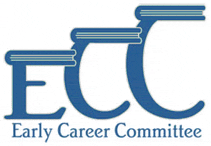What is a typical day like in your role and in HR in general?
Like with any job, I don’t think there is a “typical day”! Day to day, I spend my time recruiting for open jobs and internships, answering employee questions, on-boarding new employees, and helping to plan company events. A typical day in HR in general varies depending on the role. Some roles are more focused on recruiting and some are more focused on employee relations or benefits. I think everyone should take some time to get to know their HR department! We aren’t only here when you have benefits questions or when something goes wrong; we can also help with general questions, shaping goals, and career advice!
Where did you get your start? Was working in HR for a publishing company something you chose or was it a happy circumstance?
I actually got my start after college as a third grade teacher in the South Bronx. After deciding that was not for me, I became a temp with an employment agency, and assisted clients with figuring out how to take the next steps in their careers. It was a total happy accident that I ended up in publishing and human resources, which is really where I should have been all along!
What do you think some of the differences are between working in HR for a publishing company versus for a company in another industry?
I think the biggest difference is that the employees in publishing really love what they do. There is a clear passion for the product, and that passion is so evident in the energy that is in the office every day.
What is some advice you would give to employees new in their career?
Network! So many job opportunities come from networking, and a lot of jobs are filled by referrals. Ask for informational interviews, attend Young to Publishing and Early Career Committee events, or join a group that fits your interests. This is the best thing you can do for yourself.
What is the most surprising thing you’ve learned about the publishing industry and/or the process of making books?
Although I’ve always been a bookworm, I never realized how much work goes into making a book and how many employees work on getting a single book to market! Essentially, it’s a much bigger operation than I ever expected, and there are departments that I never even knew existed before getting into publishing (looking at you, Managing Editorial and Production!)
What were some of your favorite kids books growing up?
Growing up, I absolutely loved (and still do!) Tomie dePaola, especially his book Strega Nona. My parents and I read this over and over when I was little and it still has a special place in the bookcase.







